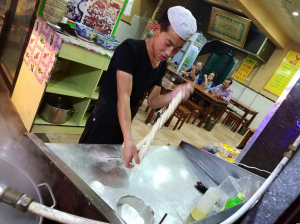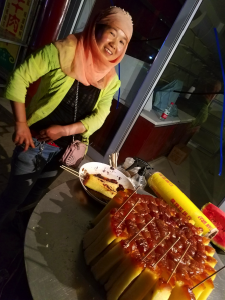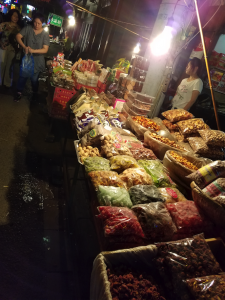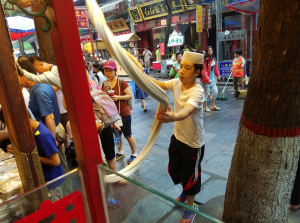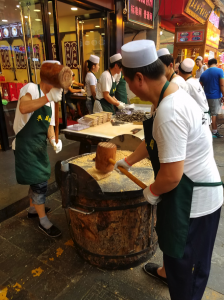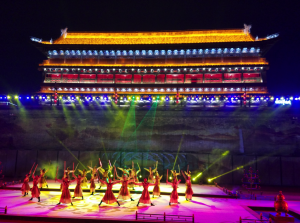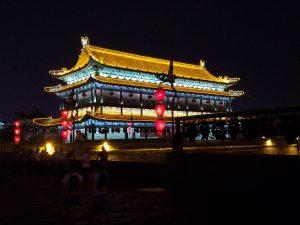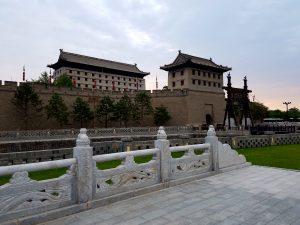 Chinese culture belongs not only to the Chinese but also to the whole world,” said former Chinese president Hu Jintao. If Chinese culture does indeed belong to the world, then, without a doubt, the place to explore it is Xi’An. If you’ve never heard of it before, you’re probably not alone. Oddly, one of China’s most interesting and unique cities is not particularly well known to the outside world, especially considering its historical significance. Xi’an is particularly special due to that unique amalgam of food, culture and history that entices the curious traveler, beckoning one to stay and explore, to study its past and to revel in its atmosphere. A visit to Xi’an nourishes the forlorn traveler’s soul much as the rich and distinctive foods in its night markets nourish the hungry body.
Chinese culture belongs not only to the Chinese but also to the whole world,” said former Chinese president Hu Jintao. If Chinese culture does indeed belong to the world, then, without a doubt, the place to explore it is Xi’An. If you’ve never heard of it before, you’re probably not alone. Oddly, one of China’s most interesting and unique cities is not particularly well known to the outside world, especially considering its historical significance. Xi’an is particularly special due to that unique amalgam of food, culture and history that entices the curious traveler, beckoning one to stay and explore, to study its past and to revel in its atmosphere. A visit to Xi’an nourishes the forlorn traveler’s soul much as the rich and distinctive foods in its night markets nourish the hungry body.
Xi’an is located in Shaanxi province, in central China, about 1,400 km (a 14-hour bus ride) from Shanghai. Though no bullet trains serve it, it is still rather easily accessible by plane. I freely profess my ignorance of the city prior to visiting. In fact, the only reason I even ventured there was to make it my base to visit the nearby Terracotta Army, one of the world’s greatest archeological destinations. Even then, I originally intended to stay only for two nights, just long enough to see the army. Yet, the practiced traveler knows to always remain nimble, neither permitting unforeseen obstacles nor inflexible plans (or mindsets) to encumber the travel experience. Within minutes of entering central Xi’an, I knew I would extend my stay.
History
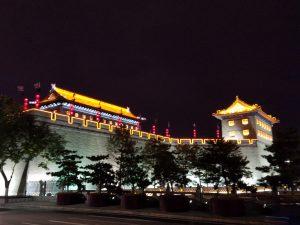
Fortifications and Wall
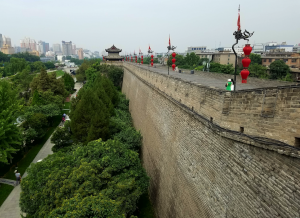
Atmosphere
The base of the walls today is ringed by beautiful gardens and walkways where locals relax, fish or take leisurely walks along the top of the wall. Bikes and even golf carts can be rented for those who seek to negotiate the entire circumference of the wall.
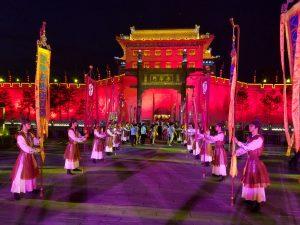
Entering Xi’an through the main gate
Xi’an, however, has an extremely vibrant night life that offers more than just well-choreographed public theater. Each night, just outside of the city walls, hundreds of locals come together to perform a sundry variety of music and dance, from traditional Chinese to waltz to country-western and more. The city is alive with song, dance and the scent of food until late into the night.
Muslim Quarter and the Great Mosque
Merchants traversing the Silk Road introduced Islam to Xi’an many centuries ago and its influence has never receded. The center of the old city, and perhaps one of its most interesting parts, is composed of the Muslim quarter. The residents here wear hijabs and kufis, while Arabic writing and calligraphic art adorns the walls of buildings and alley ways. Despite the strong Islamic influence, it is important to note that the inhabitants are Chinese and speak Mandarin rather than Arabic. Numerous attempts by my father to converse with locals in Arabic yielded no success.
Where else but in the Muslim quarter would one also find one of China’s oldest mosques? Parts of the Great Mosque of Xi’an are said to date back to the Yuan dynasty (13th century C.E.) The mosque grounds are open to the public for a nominal fee, though admission to the main mosque is reserved for worshippers only. Those who are granted admission to the interior of the mosque are greeted with a most fabulous and rare sight – the Quran has been painstakingly carved into the wood along the entire interior of the building in both Arabic and in Chinese (note: this was the first time I had ever seen the Quran written in Chinese characters and I found it rather impressive.) Getting to the mosque is an adventure in itself, as one must navigate through a seemingly endless maze of bazaars, shops and alleys.
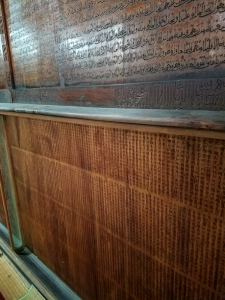
The Quran, in Chinese and Arabic
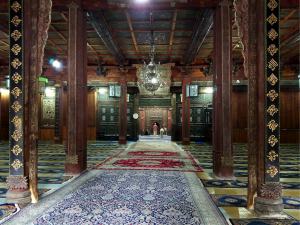
Rare peek inside the Great Mosque, not open to non-worshippers
Food
Quite naturally, Xi’an’s multifarious past also translates to a decidedly assorted and splendid plate of distinctive ethnic foods. It’s difficult to declare one local specialty as there are so many. Is it the scrumptious selection of dumplings? The noodles, hand-made and cooked directly in front of you? The ambrosial spiced meats hanging from the storefronts? Or perhaps it is the utterly amazing lamb kebabs? There was even something that, as best as I could tell, was a dumpling-style hamburger. Foods as diverse as the full spectrum of the Newtonian color wheel abound through the bazars and shops of Xi’an, and particularly so in the Muslim quarter. If Chef Anthony Bourdain has not yet visited, he is missing out!
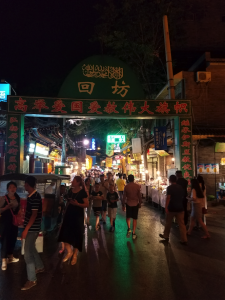
Xi’an Muslim quarter
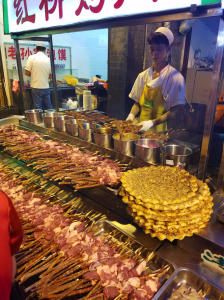
Lamb kebabs, a local specialty
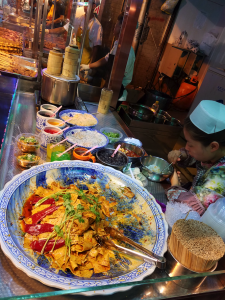
Food vendors in Muslim quarter
Emperor Qin’s Terracotta Army

A few words about visiting the Terracotta Army. It is about an hour away by car from Xi’an and I recommend hiring a local driver to take you right as the site opens, rather than joining the throngs of tourist buses that arrive slightly later. You will appreciate the head start you have on the large masses. Visitor services are almost exclusively in Chinese (with the exception of foreign-language recorded audio guides.) Official tour guides are also available for an additional fee. Note that entrance to the site is by cash payment only.
The emperor’s mausoleum is a short and free bus ride away. Over the centuries, erosion has taken its toll as the man-made mountain has lost about half of its original height. The mausoleum site is composed of walkways leading through gardens and small forests, though there is not much further to see for the average tourist.
Window to the world
Xi’an was once China’s window to the world. It is now the core of its rich culture. I came for the Terracotta Army but ended up staying for the wonders of the city. Only once in my travels have I come across another city as unexpectedly delightful and surprising as Xi’an. I will make it a point to visit once again someday. In the meantime, I invite you to visit and experience it as I did.
More Photos [Author’s note: all photos taken by me]
